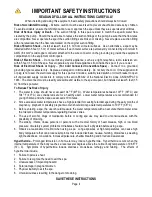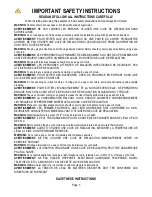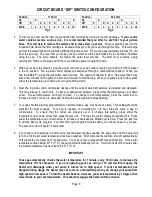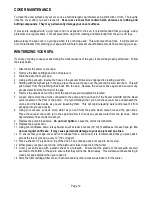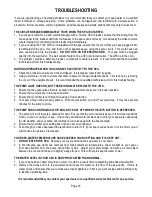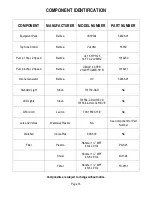
BROMINE
Bromine is a sanitizer that is best suited for use in spas. Unlike chlorine, bromine’s effectiveness is not sharply
reduced as pH rises. As chlorine produces byproducts called chloramines, Bromine’s byproduct is called a
bromamine. Unlike a chloramine, a bromamine is still an effective sanitizer and it does not create unpleasant
odors. There are two traditional types of brominating systems. The first uses bromine tablets or caplets. They
are generally placed in a floating feeder to dissolve and to create a bromine residual in the water. The water will
require regular shocking. The second system requires the addition of bromide salt to the water. An oxidizer is
then added, after each use, to produce bromine sanitizer. This will sanitize and oxydize the water after each use.
LITHIUM HYPOCHLORITE
Unlike other forms of granular chlorine, lithium is a mild form that, when used in proper dosages, will not cause
discoloration of your polyethylene spa’s surfaces.
Using any other form of granular chlorine will null and void
the surface warranty on your spa.
Although lithium may cause your pH to rise quicker than normal, it is also
quick dissolving, has minimal odors and has an extremely long shelf life as benefits.
BIGUANIDE
Unlike bromine and chlorine, biguanide is a non halogen sanitizing compound. It can be an effective sanitizer for
people who have allergic reactions to halogen sanitizers like chlorine and bromine. It does not produce odors or
irritate skin. While it can be effective as a sanitizer, biguanide is not compatible with chlorine or bromine. Contact
with these chemicals will leave gummy deposits in your spa. Also, Biguanide is not effective with heavy bather
loads.
OZONE
Ozone is a chemical that is produced onsite using an ozone generator. It is injected directly into the spa water. It
is not an effective, stand alone sanitizer because it has a very short life and it will not leave a measurable residual
in spa water because of the low amounts of ozone being produced. However, it is the most effective oxidizer
available. It will effectively kill microorganisms that it comes into contact with and it significantly reduces the
amount of other sanitizers needed to maintain healthy spa water.
MINERAL PURIFIERS
Silver, copper and zinc have been used very effectively to suppress bacteria and viruses in water. Copper and
silver coins were placed in water barrels on wagon trains to keep the water fresh. Minerals do not work as quickly
as other sanitizers and they cannot remove organic waste from the water. Although most metal producing
systems have inline chambers that use electrolysis to produce metal ions and introduce them into the water,
mineral purifying sticks have become very popular and they work extremely well with ozone.
SHOCK TREATMENT
One of the most important parts of a spa treatment program is to shock or super chlorinate the water after each
use. When a spa is used, bathers will leave oils, greases and ammonia from their sweat and many other
contaminants from their body, in the water. Unless removed right away, these contaminants will become food
source for other microorganisms in the water and they can cause odors and unhealthy water. Shocking after each
use will remove these contaminants and help to make your spa much easier to maintain.
Page 15




